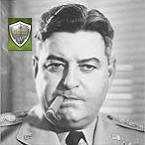ORIGINAL: ColinWright
Maybe. However I recoil from Curtis' approach for two reasons.
The first is admittedly irrational. I prefer that 36 rifle-squad battalions have 36 rifle squads.
It's subjective. Which is more important: Getting the number of squads right, or getting the number of rifles & MGs right? I prefer the latter.
If I did anything, I'd probably modify the values for the squad rather than add more squads. As I noted earlier, I routinely modify values for each scenario I design, so there's no problem there.
Well, there is the issue of "fine control" that I posted about earlier. There are a limited number of integers available for squad values. Can you accurately distinguish between that 8-man squad with 2 LMGs vs. that 13-man squad with 1 LMG? You can with a mix of squads.
The second reason is somewhat easier to defend. I think that Norm's density values err on the side of being too restrictive. One will be severely penalized if one jams in as many troops into a given area as historically often were jammed in.
Sorry, but your way gets the density wrong. In your version, both 36-squad units will have the same density, despite one having 8-man squads and the other having 13-man squads. My way gets the density right. Now, you can complain about the density penalty all you want, but that's not a defensible solution.
Note: It also gets the lift requirements right, too.




